SPI FORMULAS
1/117
There's no tags or description
Looks like no tags are added yet.
Name | Mastery | Learn | Test | Matching | Spaced |
|---|
No study sessions yet.
118 Terms
Power is proportional to
amplitude squared
Intensity is ___________________to power
directly related
Intensity is proportional to
amplitude squared2
Intensity (w/cm2)
power (w) divided by area
1MHz =
1.54 mm wavelength
2MHZ =
0.77mm wavelength
wavelength is equal to
1.54mm/microseconds divided by frequency
Propagation speed is determined by
medium only
what characteristics of a medium affect the speed of sound
stiffness (elasticity)
density (intertia)
Stiffness is ___________________to propagation speed
directly related
Density and speed are _____ related.
inversely related

wavelength is______________________to frequency
inversely related
Pulse duration is determined by
sound source
pulse duration is directly related to
the number of cycles in the pulse and directly related to period
Pulse Duration (PD)
The actual time from start of a pulse to the end of that pulse (not including the listening time)
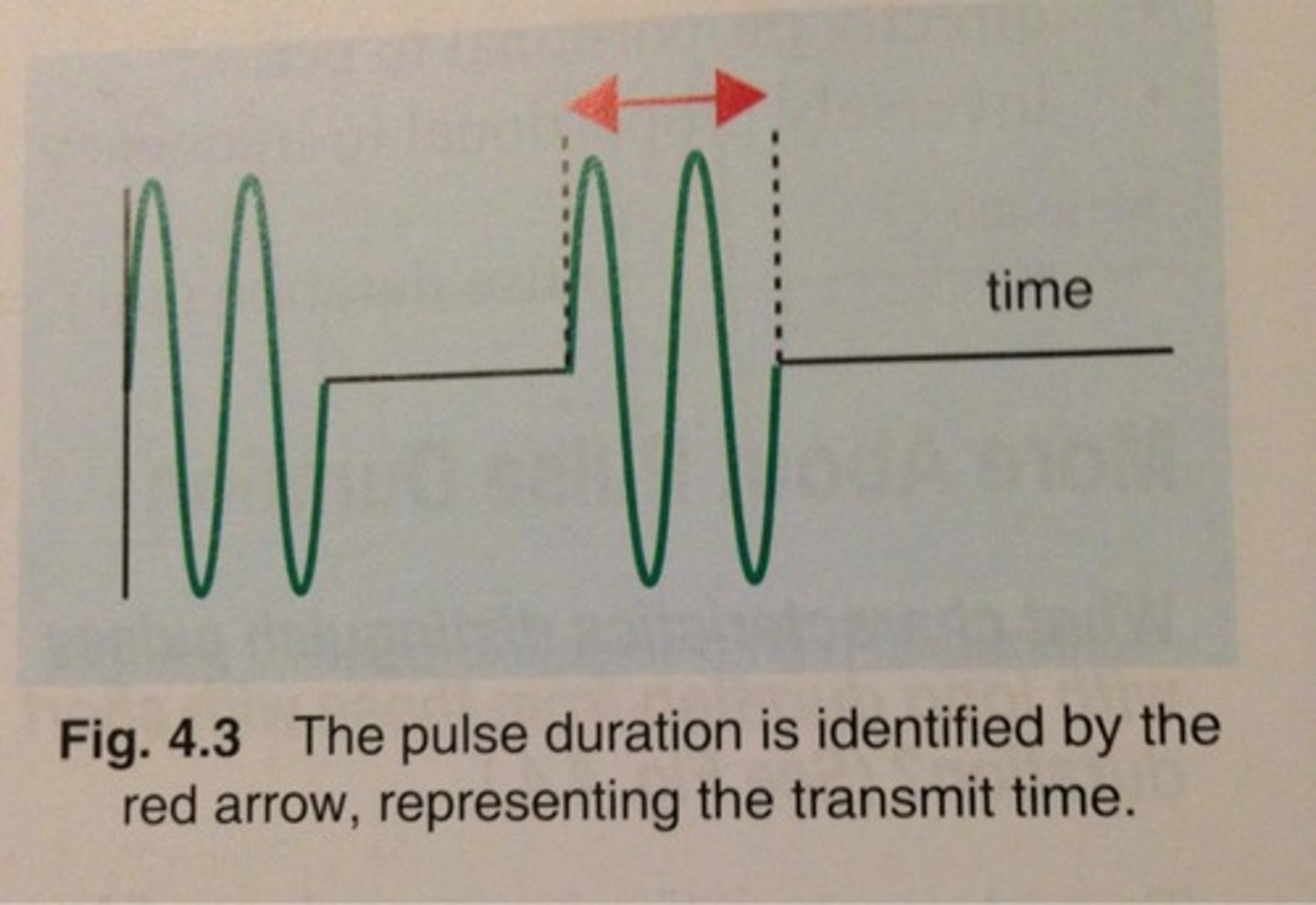
Pulse duration is ____________________________to frequency
inversely related
Pulse duration is directly related to _____________and inversely related to frequency
number of cycles divided by frequency

PRP is unrelated to
period; it is related only to depth of view.
PRP and depth of view
Directly related
PRF is unrelated to
frequency
PRF and Depth of view are
inversely related
Shallow imaging
-Less listening
-Shorter PRP
-Higher PRF
-Higher duty factor
deep imaging
-More listening
-Longer PRP
-Lower PRF
-Lower duty factor
PRP and PRF are ______ related.
inversely related
duty factor
the percentage or fraction of time that the system transmits a pulse
Duty factor is determined by
Sound source only
Duty factor is _____ related to imaging depth.
Inversely
*When depth increases, DF decreases
When depth decreases, DF increases
The transmit time is called the _______.
pulse duration
transmit time and receive time
In ultrasound
transmit time is 0.2% and
receive time is 99.8%
The duty factor for continuous wave ultrasound is
1.0 or 100%
Spatial Pulse Length (SPL)
Length or distance that a pulse occupies in space; distance from start of a pulse to end of that pulse
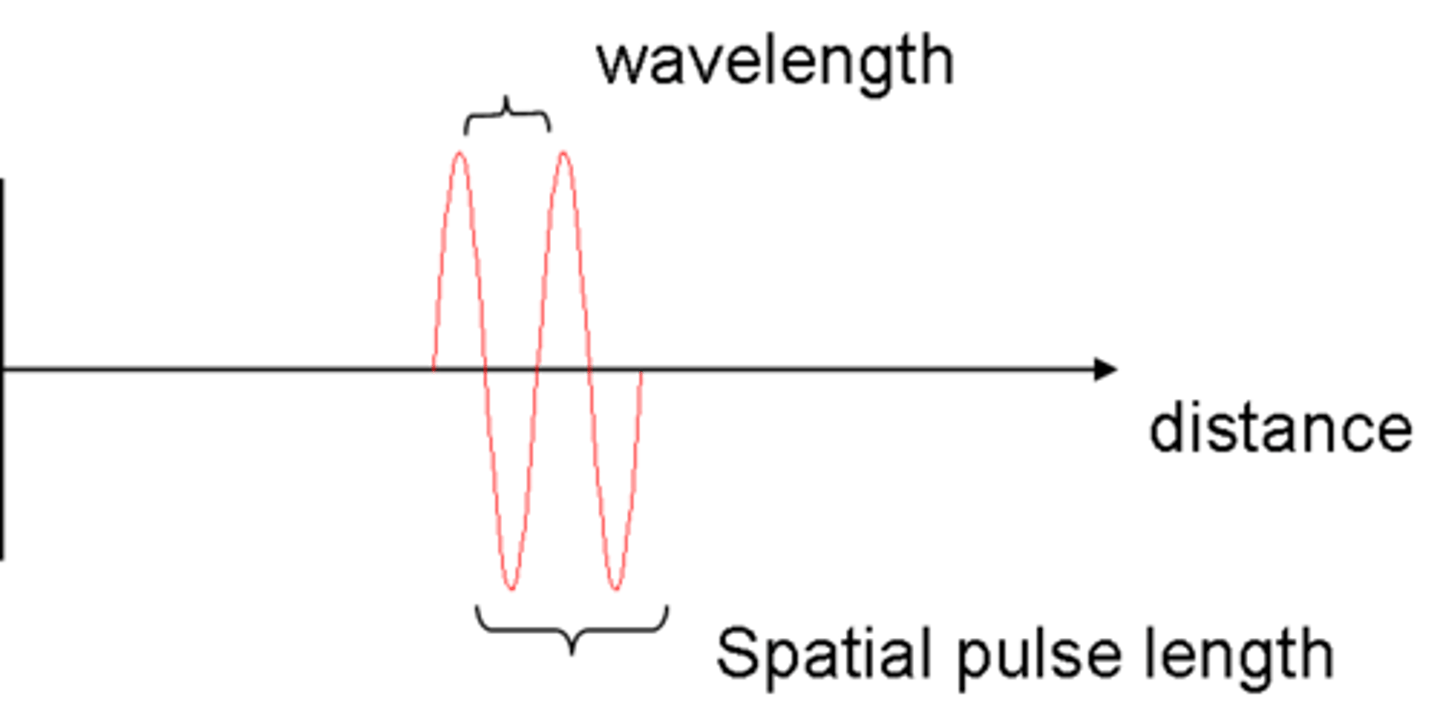
spatial pulse length is determined by
Both the source and the medium
spatial pulse length is ______________________ to wavelength
directly related

spatial pulse length is ________________________to frequency
inversely related
Distance and attenuation are ______ related.
directly related
Frequency is _____________to attenuation
directly related
Scattering is ________________to scattering
directly related

Rayleigh scattering and frequency
directly related. when frequency doubles, Rayleigh scattering is 16 times greater
Rayleigh scattering is proportional to frequency 64

Absorption is __________________to frequency
directly related

Total attenuation increases with
higher frequency or longer path length
total attenuation
the total amount of sound (in dB) that has been attenuated at a given depth
total attenuation is equal to
attenuation coefficient (db/cm) x distance
attenuation coefficient
the rate at which sound is attenuated per unit depth
attenuation coefficient is _________________to frequency
directly related
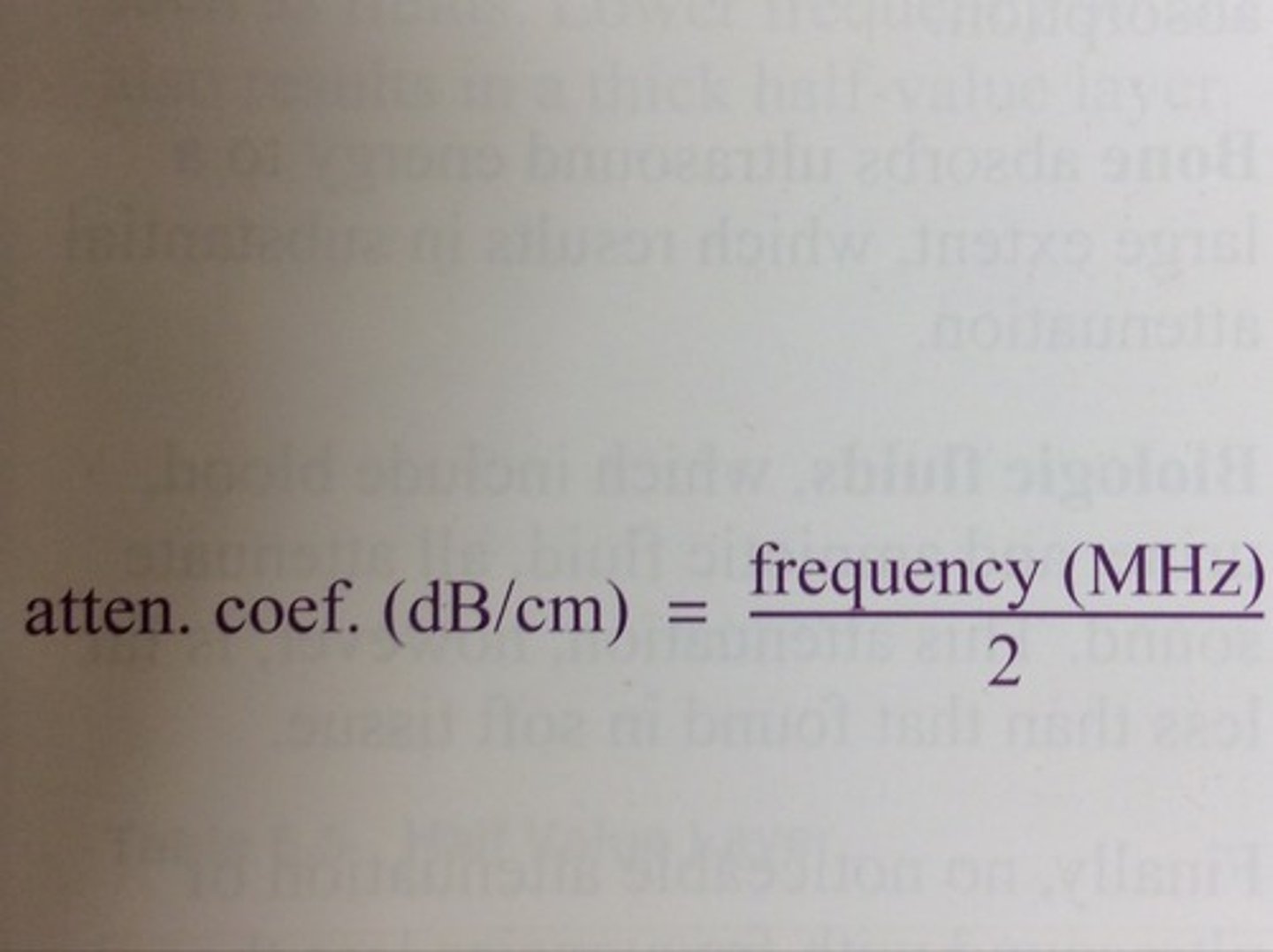
attenuation coefficient is equal to
1/2 the frequency
0.5 db/cm divided by frequency (MHZ)
Impedance
the acoustic resistance to sound traveling in a medium

Impedance is determined by
medium only
Impedence is equal to
rayls = density (kg/m3) x propagation speed (m/s)
Impedance is calculated
by multiplying the density(kg/m3) of a medium by the propagation speed (m/s)of the medim
Incidence (starting) Intensity is equal to
reflected intensity + transmitted intensity

incidence angle
angle between incident sound direction and a line perpendicular to the boundary of a medium
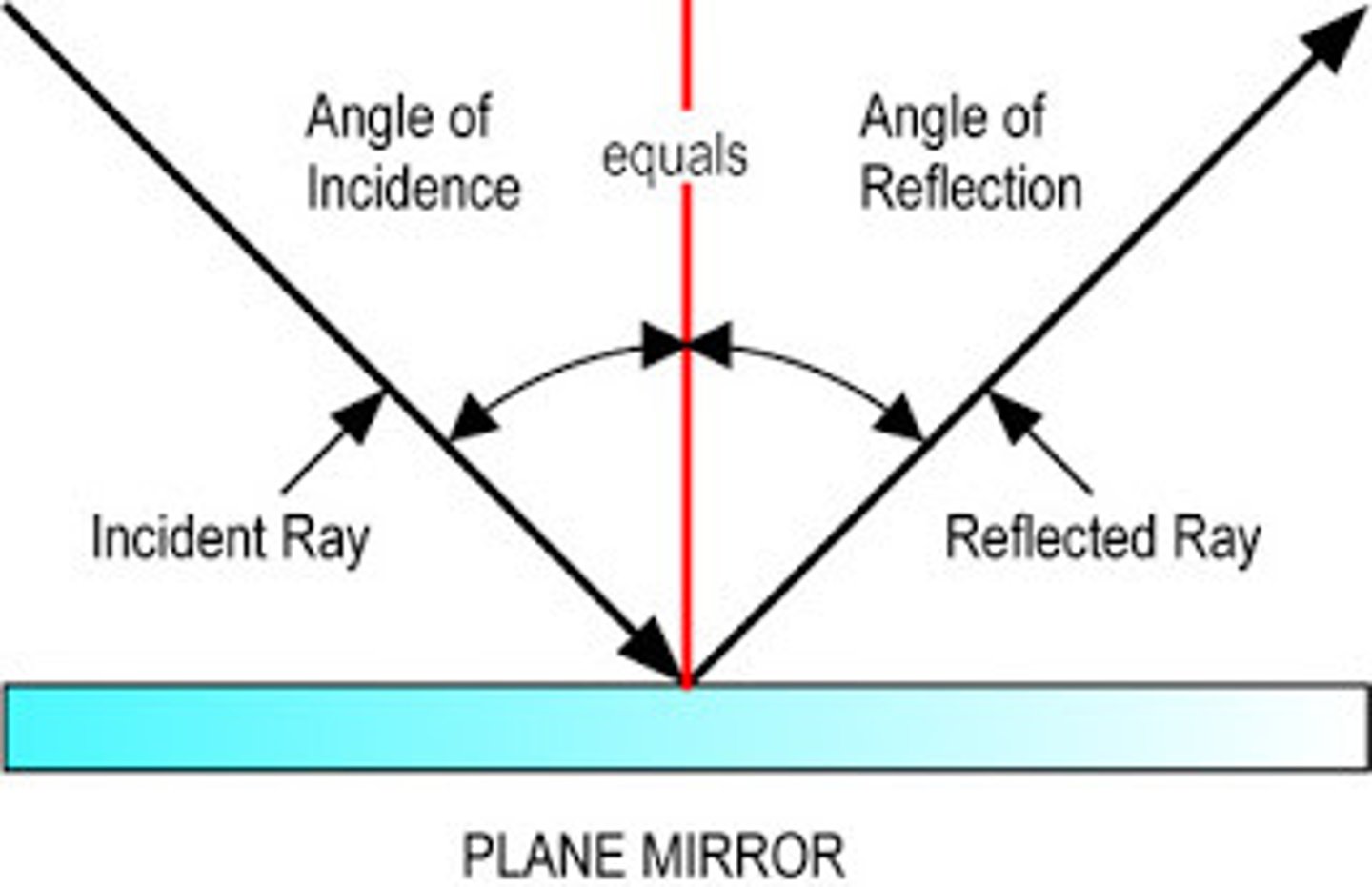
intensity reflection coefficient (IRC)
the percentage % of the intensity that bounces back when a sound beam strikes the boundary between two media
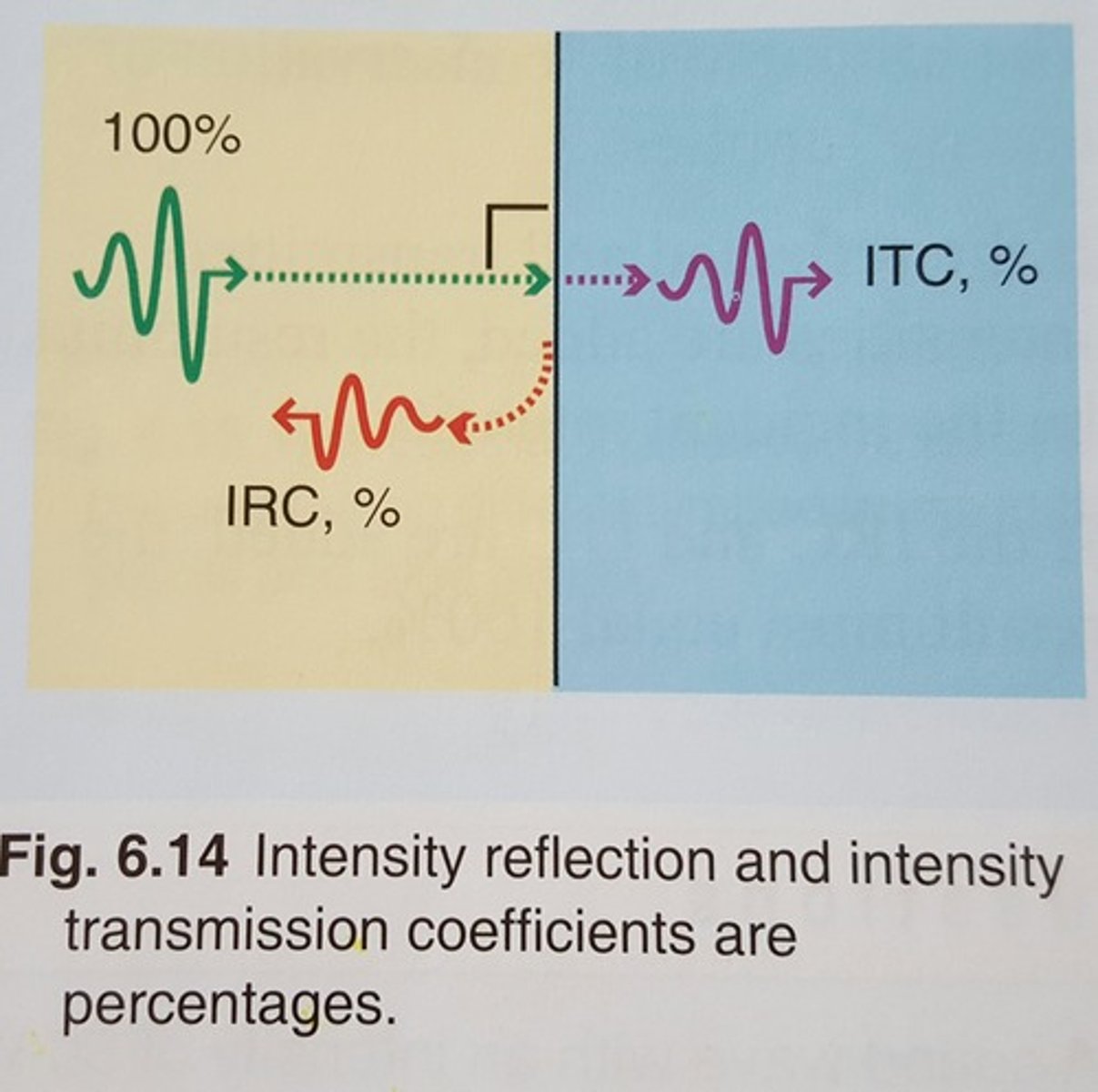
Intensity Transmission Coefficient (ITC)
the percentage of intensity that passes in the forward direction when the beam strikes an interface between two media
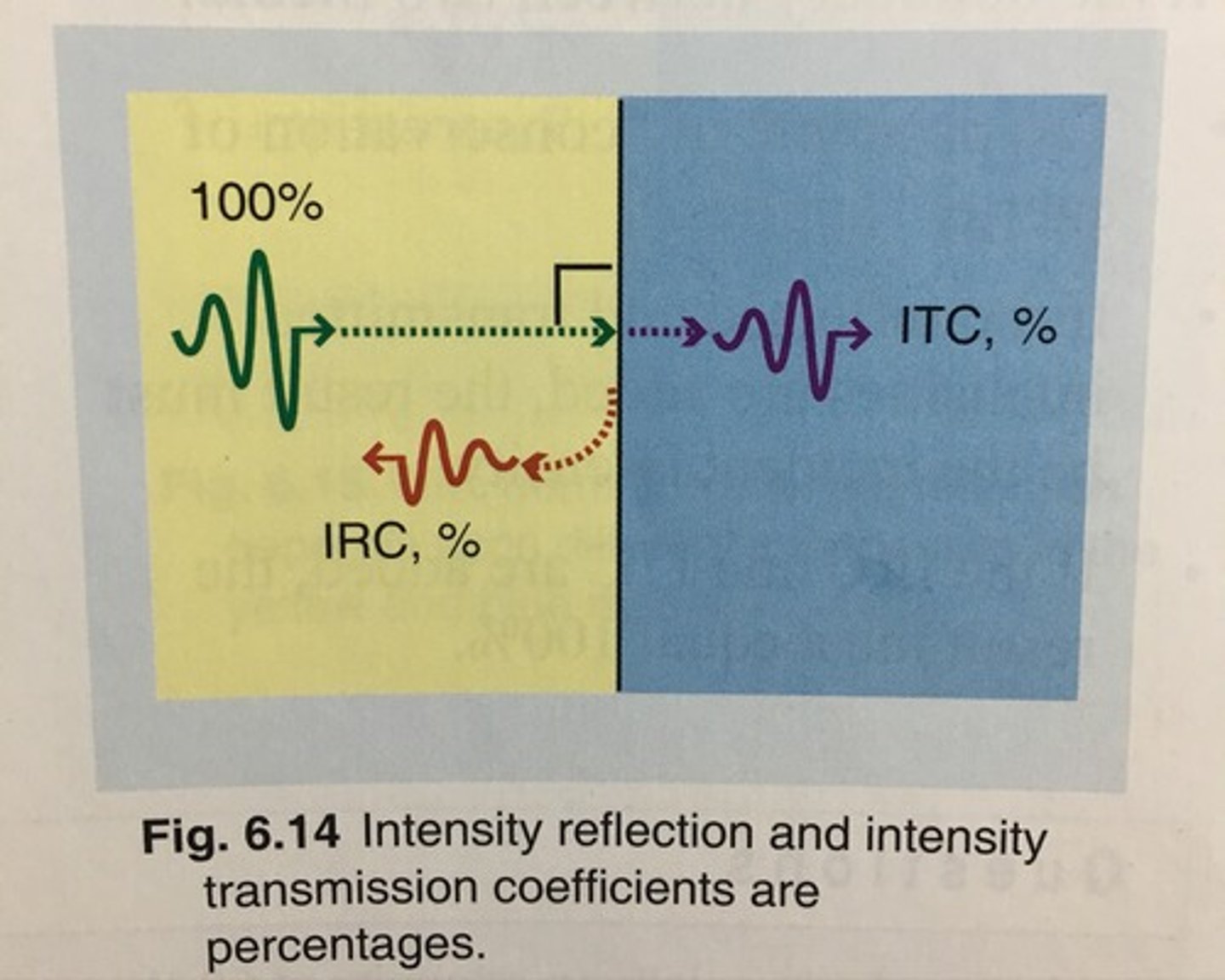
IRC + ITC =
100%
Reflection with normal incidence
When a sound beam strikes a tissue boundary at a 90 DEGREE ANGLE (normal incidence), reflection occurs ONLY if the media on the other side of the boundary have DIFFERENT IMPEDANCES
transmission with normal incidence
these are simply reflection questions, whatever is not transmitted, must be reflected
transmission with normal incidence and media with same impedance
All of the sound is transmitted when the two media have the same impedance
Intensity Transmission Coefficient (ITC) is equal to
transmitted intensity divided by incident intensity x 100 = 1 - (IRC)
IRC (%) + ITC (%) =
100%
ITC (%)
(transmitted intensity/incident intensity) x 100
Normal incidence is also known as
Perpendicular incidence
Normal incidence is unrelated to
reflection and transmission with oblique incidence
REFLECTION ANGLE = INCIDENT ANGLE
When reflection occurs with oblique incidence, the sound beam is NOT redirected back to the transducer, but rather in a DIFFERENT DIRECTION.
The direction it goes in will be EQUAL and OPPOSITE to the incident angle:
ANGLE OF INCIDENCE = ANGLE OF REFLECTION

reflection coefficient
the reflective property of a boundary
Incident intensity =
reflected intensity + transmitted intensity
angle of incidence = angle of reflection
law of reflection
Snell's Law of Refraction
the relationship of the angle of incidence to the angle of refraction
Time of flight is directly related to
how deep a sound pulse travels
time of flight is equal to
depth (mm) =
1.54(mm/microsec) x goreturn time microsec
PRP (microseconds) equals to
Imaging depth(cm) x 13mcrosc/cm
PRF (Hz)=
77,000 cm/s / Imaging Depth (cm)
quality factor/Q factor
a measure of beam purity
the operating frequency of the transducer divided by the bandwidth
quality factor is inversely related to
Bandwidth
With cw transducer
electrical frequency is equal to acoustic frequency
The speed of sound in PZT and the frequency of sound are ____ related.
directly related
PZT thickness is ____________ to frequency
inversely related
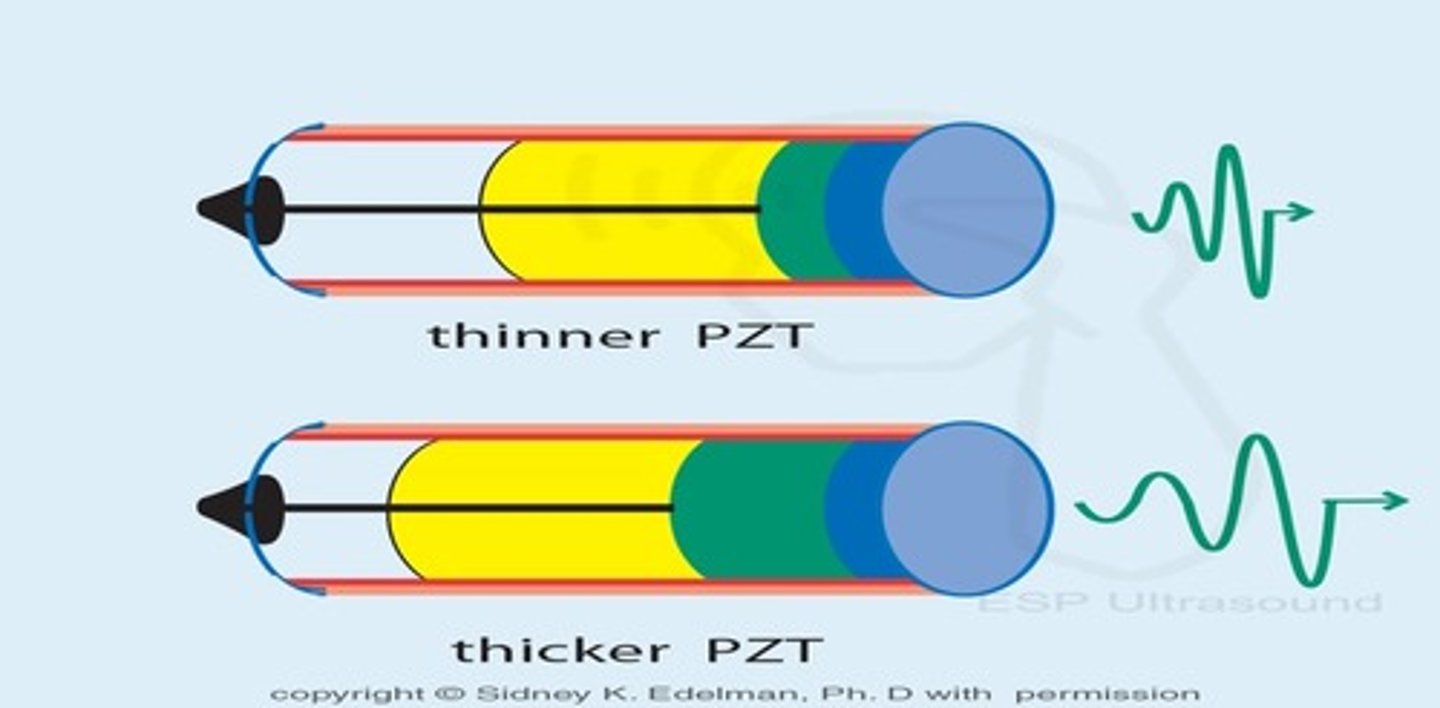
diameter of PZT and focal length are
directly related
Thin PZT
higher frequency and shorter wavelength cycles
Thick pzt
Low frequency and longer wavelength cycles
Frequency is _________________ to focal depth
directly related
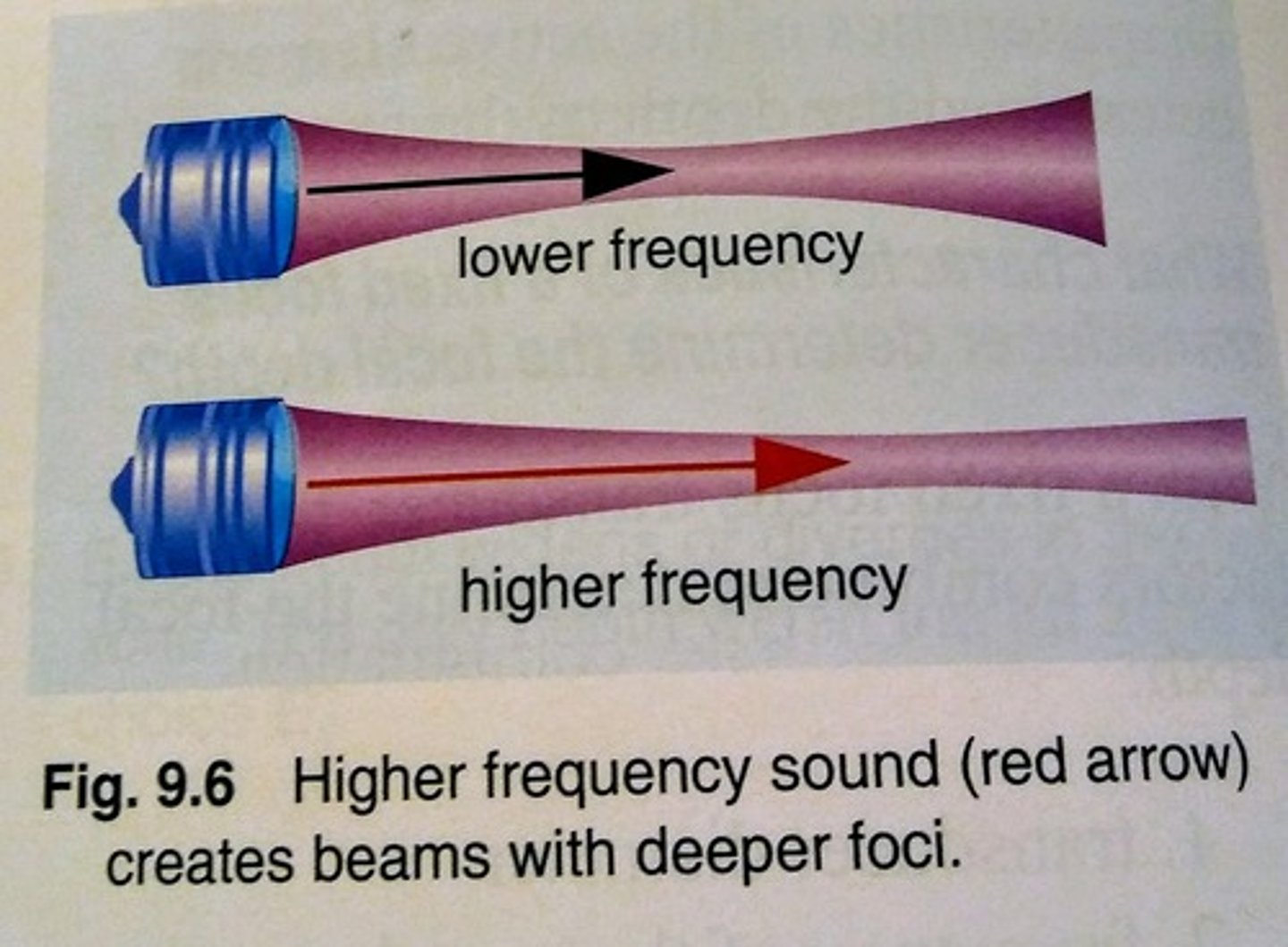
focal depth (mm) is equal to
diameter(mm)2 x frequency(MHZ)/6 and
diameter(mm)2 /wavelength
Crystal diameter and beam divergence are ______ related.
inversely related
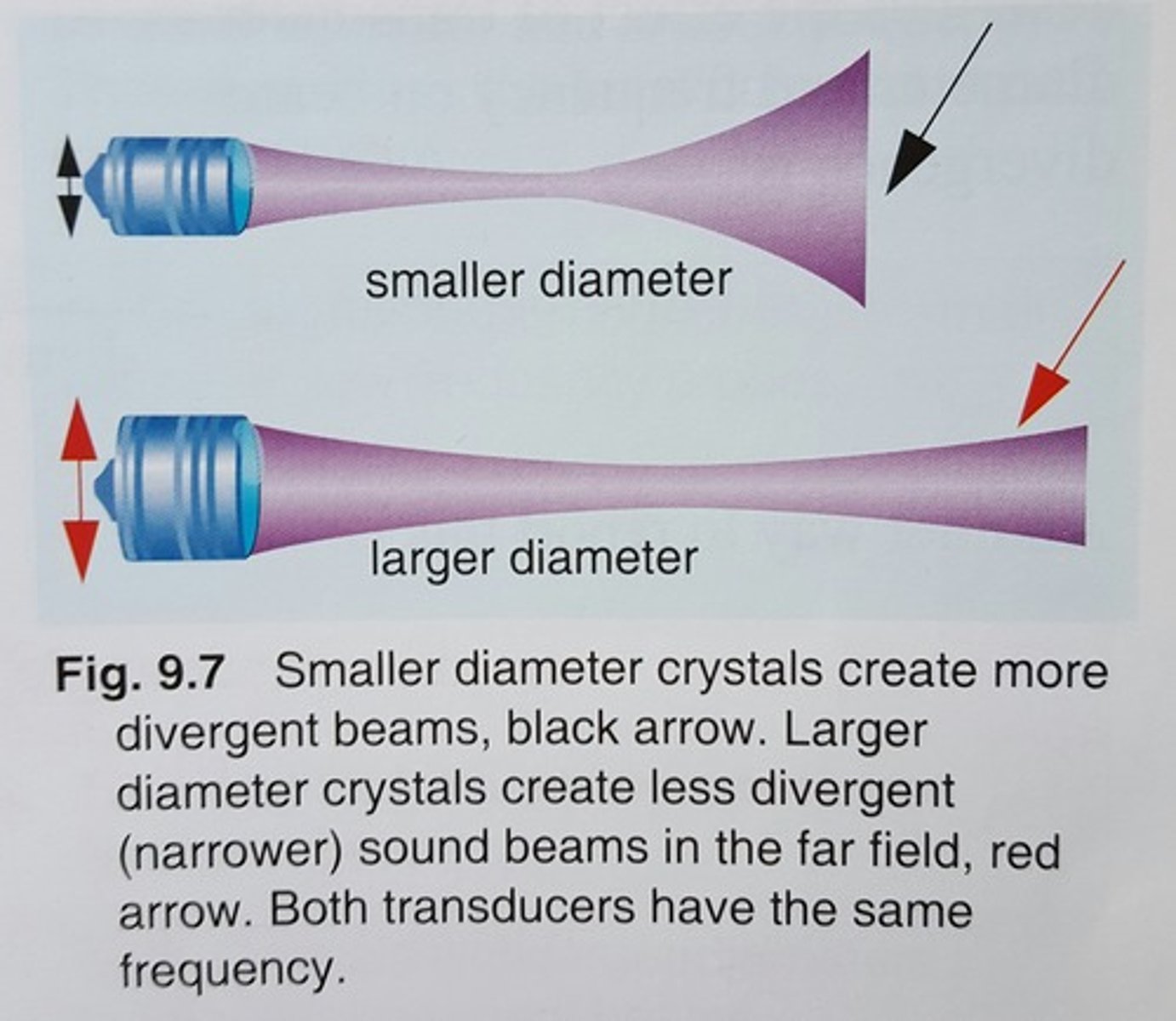
small crystal diameter pzt produce beams that
spread out more
large crystal diameter pzt produce beams that
diverge less
large diameter crystals improve
lateral resolution because they diverge less
Frequency and beam divergence are ______ related.
inversely related
lower frequency more divergence
high frequency less divergence
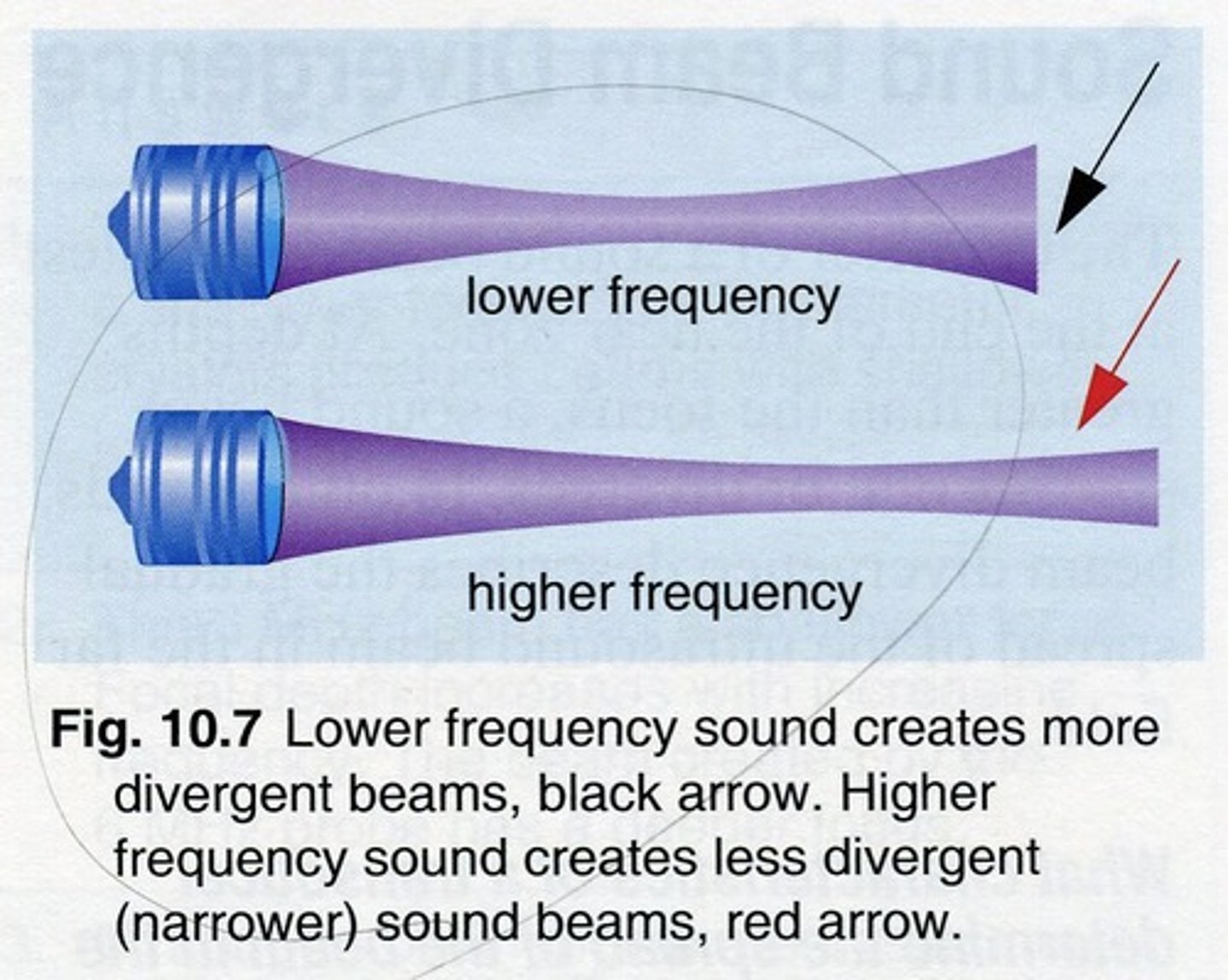
Higher frequency sound beams improves
lateral resolution
Sin Divergence Angle
1.85/ diameter (mm) x frequency(MHz) and
1.2 x wavelength/ diameter
Axial resolution is determined by
spatial pulse length
Axial resolution can be improved by
reducing the spatial pulse length
reduced pulse duration
higher frequency transducers
Synonym for axial resolution
LARRD
longitudinal resolution
axial resolution
radial resolution
range resolution
depth resolution
Lower numerical values of axial resolution indicate
shorter pulses
Axial resolution is equal to
mm= spatial pulse length(mm)/2 and
mm = wavelength(mm) x number of cycles in pulse/ frequency
axial resolution in soft tissue
mm= 0.77 x number of cycles in pulse/frequency
Lateral resolution is determined by
Width of the sound beam (narrower beams have better resolution)
lateral resolution
the ability to accurately identify reflectors that are arranged perpendicular to the ultrasound beam
lateral resolution is best at the
focus and focal zone where the beam is narrowest
Lateral resolution is equal to
beam diameter
Frame rate is improved by
1. Decreased line density
2. Decreased depth
3. Decreased sector width
4. Decreased number of focal zones
5. Using write-zoom
6. Decreased persistence
7. Increased operating frequency
frame rate and tframe are
inversely related and reciprocals